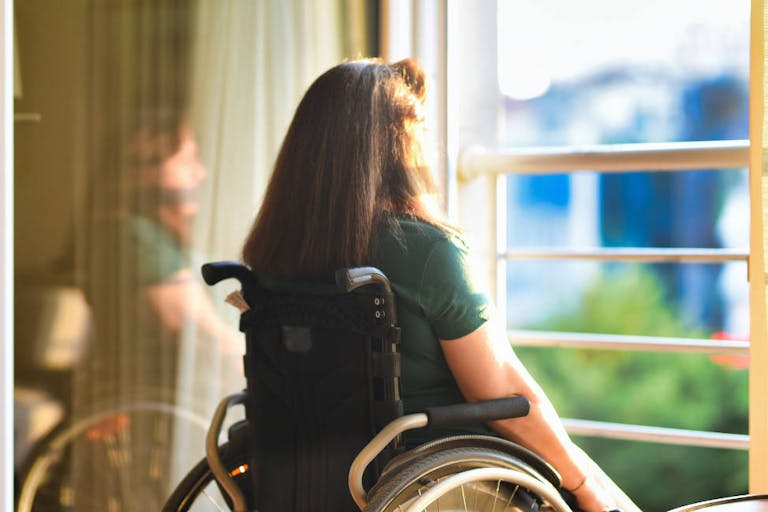
Thousands of South Korea schools close as birth rate plummets
Cassy Cooke
·
Investigation shows forced sterilization is a lingering injustice against disabled persons
While forced sterilization might seem like a relic of the distant past, its chilling reality persists — particularly in Europe — where this appalling practice endures, reflecting a sinister societal attitude that continues to value certain lives over others. The historical use of sterilization and abortion as tools of control against marginalized groups, especially the impoverished and disabled, remains an unsettling truth even in our modern era.
A recent investigation by The New York Times shed light on the distressing experiences of numerous disabled individuals subjected to non-consensual sterilization, often falsely justified as being ‘in their best interest,’ even when medically unnecessary.
What kind of message does this send?
While pro-abortion advocates are known to staunchly defend a woman’s autonomy over her body, a glaring double standard emerges when it comes to the treatment of the disabled. This contradiction raises urgent questions about societal attitudes and the unequal treatment of our most vulnerable members of society, like disabled individuals and preborn children.
Today, many countries pay lip service to the denouncement of forced sterilization, yet the abhorrent practice persists. Consider Iceland — an unsettling example of a nation with a history of forced sterilization. Despite efforts to tighten sterilization laws and condemn human rights abuses under the Istanbul Convention, Iceland’s health ministry approved the sterilization of six teenage girls between 2013 and 2017, as reported by The New York Times. Although Iceland prohibits forced tubal ligations, hysterectomies (falling outside the Istanbul Convention) are still performed. Shockingly, these sterilizations are often executed for the convenience of families and caregivers.
Article continues below
Dear Reader,
In 2026, Live Action is heading straight where the battle is fiercest: college campuses.
We have a bold initiative to establish 100 Live Action campus chapters within the next year, and your partnership will make it a success!
Your support today will help train and equip young leaders, bring Live Action’s educational content into academic environments, host on-campus events and debates, and empower students to challenge the pro-abortion status quo with truth and compassion.
Invest in pro-life grassroots outreach and cultural formation with your TRIPLED year-end gift!
READ: EUGENICS: California inmates forcibly sterilized because ‘it’s cheaper than welfare’
The story of Kristin Smith, a capable woman with Down syndrome from Iceland, is a striking example. Despite living a normal life and expressing a desire to have children in the future, Smith’s mother took her for a tubal ligation at age 20. This decision robbed her of the opportunity to have children with her partner later in life.
Forced sterilization is not confined to Europe. Astonishingly, even in the United States, a 2022 report by the National Women’s Law Center revealed that 31 states, plus Washington D.C., allow for involuntary sterilization, predominantly affecting people with disabilities. This includes the heartbreaking case of Ashley X, who was subjected to a hysterectomy at six years old due to developmental disabilities, robbing her of her reproductive rights.
The persistent practice of forced sterilization affecting the disabled in both Europe and the United States underscores a disturbing truth: despite claims of universal rights, many disabled individuals are systematically denied theirs. Addressing this injustice requires a deep reexamination of biases and an unwavering commitment to securing the rights of every individual, irrespective of ability.
Eliminating forced sterilization demands not just legal reform but a moral imperative to honor the dignity of all.
Live Action News is pro-life news and commentary from a pro-life perspective.
Contact editor@liveaction.org for questions, corrections, or if you are seeking permission to reprint any Live Action News content.
Guest Articles: To submit a guest article to Live Action News, email editor@liveaction.org with an attached Word document of 800-1000 words. Please also attach any photos relevant to your submission if applicable. If your submission is accepted for publication, you will be notified within three weeks. Guest articles are not compensated (see our Open License Agreement). Thank you for your interest in Live Action News!

Cassy Cooke
·
Issues
Bridget Sielicki
·
Issues
Angeline Tan
·
Issues
Nancy Flanders
·
Issues
Wesley J. Smith
·
Issues
Michael J. New
·
Human Rights
Amanda Vicinanzo
·
Human Interest
Amanda Vicinanzo
·
International
Amanda Vicinanzo
·
Issues
Amanda Vicinanzo
·
Newsbreak
Amanda Vicinanzo
·